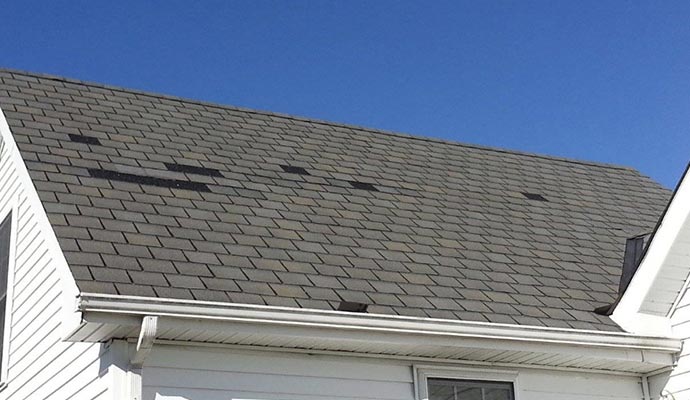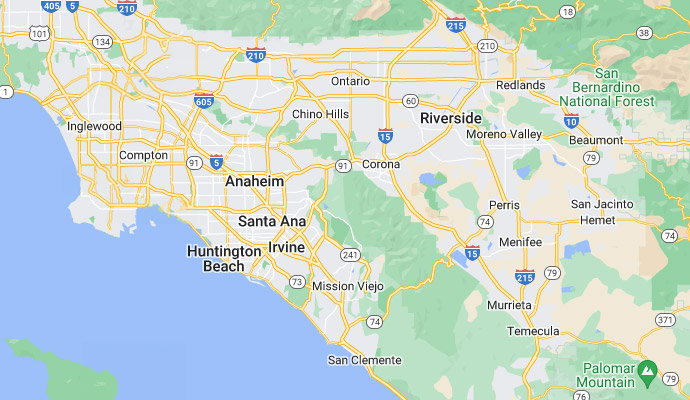
What is Roof Wind Damage?
Thunderstorms, wind storms tornadoes can all cause roof wind damage to your property. Storms can wreak havoc on unsecured structures or rooftops, causing roof leaks and other potentially catastrophic roof damage.
If you live somewhere where wind storms are a regular occurrence, you should know how to handle wind damages. Getting your roof built, replaced, or repaired by an experienced roofer is the way to go.
Wind damage can occur when you experience any storm or other weather event with high winds.
Most people associate wind damage with significant storms like tornadoes and hurricanes, but high winds can cause property damage.
How to Spot Wind Damage?
- Roof Leaks
- Missing Shingles
- Curling Shingles
- “Lifting” Shingles
- The Gutter
- Chimney Flashing
What are Properties that are More Prone to Wind Damage?
Any person living in an area prone to storms is susceptible to wind damage is at risk for experiencing wind damage.
Keep in mind that storms don’t hit your roof’s surface. If some part of the surface looks undamaged to the naked eye, it might not be safe to walk on or even inhabit the building it covers.
What Causes Wind Damage?
Changes in atmospheric pressure cause the wind. When there are atmospheric pressure differences, air moves from higher to lower areas. This can result in a gentle breeze to gale force winds depending on different factors.
Storms happen in any area of the United Statesof America.
The corners and edges of your roof property are more likely to be damaged by a strong wind because they are more susceptible to increased stress than the center parts of your roof.
As the “National Roofing Contractors Association” declares, most wind damage to roofs begins at the edge.
You can avoid some storm damage by ensuring that the materials along the edge and corners of your roof property are sturdy and in good condition.
Note that wind damage can initially look relatively minor but can immediately escalate over time. Especially in case you experience regular storms or winds.
Remember, if a corner of insulation becomes exposed, roof leaks from rain can cause further water damages to your roof and the interior parts of your home.
How to Protect your Property from Wind Damage in Advance?
If you decide to protect your property from wind damage in the future :- You should use lighter weight landscaping materials like mulch or shredded bark (as opposed to gravel or rocks),
- keep trees trimmed clear of the roof
- If you think there are wind damaged shingles or other problematic spots Having your roof checked out right away
If you live in a region, that’s likely to experience storms that include high winds, you may want to consider permanent manual or automatic storm shutters.
What are Different Types of Roof Wind Damage?
Maybe you experience more wind damage during storms, Suppose you have a shingled roof than house owners with flat roofs. Because winds can curl or lift the shingles.
Here’s a list of roof damage that you should be looking for depending on the type of roof you have on your house:
- Wood damaged shakes or shingles: Shingles were blown off, splitting, curling, and decay bt passing the time
- Composition shingles: Damaged, broken, and missing shingles, curling, and a loss of granulation.
- Roofing cement: Ripples, crumbling, and unevenness in the glue.
- Flat roof leak repair: Tears, cracks, blisters, or wrinkles, especially in areas that have previously been patched. If you have access, you should check those patched areas from inside the attic, crawl space, or the top floor of your house.
- Flashing: Punctures, tears, and buckling, particularly near corners.
- Chimneys: Look for damaged, loose, missing flashing, bricks, or cracks in the joints. If the wind damage is severe, the vent may even be leaning or listing to one side.
- Fascia, soffits and ridge vents: Stains, decay, missing shingles or curling, clogged or damaged vents, or tears in the flashing.
- Gutters: Sagging, bent, or even missing sections of the channels and downspout need to be repaired very soon. Decay, leaky seams, rust, damage to where the gutters attach to the structure
How to Repair a Wind Damage Roof?
Repairing some types of wind damage by yourself is possible, especially if you’re particularly handy or good at DIY tasks. However, anything more than minor patching requires the assistance of an experienced contractor.
Suppose you have wind damage to your roof caused by high winds and the accompanying flying debris. In that case, you should start the repair process as soon.
Starting by working with a contractor to get an estimate. Additionally, the contractor can mitigate any further damage by covering the damaged areas of your roof and windows.
If you are walking around debris in your yard or elsewhere on your property, be sure to wear sturdy shoes, long sleeves, long pants, gloves, and other protective clothing – most injuries that occur after significant storms are caused by things like broken glass, exposed nails, or other sharp objects.
You may need to purchase things like a tarp, plywood, and other protective materials during the wind damage repair process to protect your roof from further damage before long-term repairs can be done.
That said, do not embark on any significant repairs yourself before you get an inspection and speak with your public adjuster and any other necessary professionals so you fully understand what is covered and what might not be.
DKI Restotech is a full-service restoration company specializing in water and fire damage restoration. we have a team of project managers and superintendents assigned to assist customers with any damage repair case available 24/7, answering questions and addressing all concerns that may arise.
Contact Us 949-694-2829











